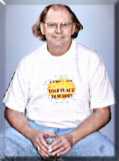 Dan Douglas is a professor in the English Department's TESL/Applied Linguistics Program and Interdepartmental Program in Linguistics at Iowa State University. He received a MA in ESL from the University of Hawaii in 1972 and a Ph.D. in applied linguistics from Edinburgh University in 1977. He has taught at the over ten universities, including Hiroshima University and Chukyo University in Japan, and has served as an editorial advisor for Language Testing and the TOEFL 2000 Development team. This interview was conducted electronically in August and September 2001. |
[ p. 9 ]
Language Testing is the primary journal in our field. It comes out four times a year and carries articles on language testing research, new test development, and reviews of new books and tests. Subscription information is available at www.languagetestingjournal.com/. Incidentally, I'll become co-editor of that publication, along with John Read, in January 2002.[ p. 10 ]
Could you briefly outline the "discourse domains hypothesis" which you developed with Larry Selinker?[ p. 11 ]
Economics. It's more expensive to produce different tests for several disciplines than to produce one test that fits all. Also, there's been very little evidence that tests in different disciplines produce sufficiently different results to justify the cost. This has led testers and administrators to advocate more general purpose tests, for both theoretical and practical reasons. On the other hand, research has also suggested that the more discipline-specific tests are, the greater the variation in performance. So, if we really need to know whether a person can use a language well enough to work in a specific area, we need to develop a LSP test. Whether we need more or less specific tests always comes back to test purpose.[ p. 12 ]
| Categorical Index |
Chronological Index |
Subject Index |
Title Index |